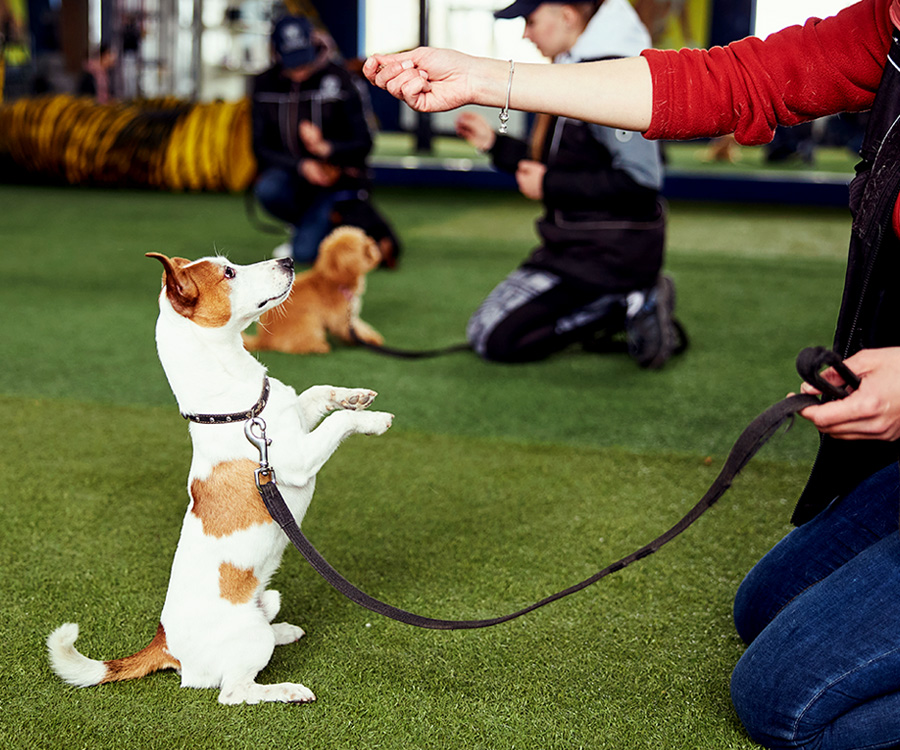News Blast Hub
Stay updated with the latest news and insights.
Dog Training: Because Your Pup Can't Read the Manual
Unlock the secrets to effective dog training! Discover tips and tricks that your pup wishes they could read. Transform your dog's behavior today!
Top 5 Essential Commands Every Dog Should Know
Training your dog is an essential part of pet ownership, and knowing the top 5 essential commands every dog should know will help ensure their safety and improve your bond. These commands form the foundation of your dog's training and everyday behavior, making it easier to manage them in various situations. Here are the commands every dog should master:
- Sit - This command helps to teach your dog to remain calm and settle down.
- Stay - This is crucial for keeping your dog in place, especially in potentially dangerous situations.
- Come - This command is essential for recall, ensuring your dog returns to you when called.
- Leave it - Teaching your dog this command helps prevent them from picking up harmful objects or engaging in undesirable behavior.
- Heel - This command trains your dog to walk beside you on a leash, making walks more enjoyable and manageable.

Understanding Canine Behavior: Why Your Dog Acts the Way They Do
Understanding canine behavior is essential for any dog owner looking to foster a harmonious relationship with their pet. Dogs communicate primarily through body language and vocalizations, which can often leave us puzzled. For example, when a dog wags its tail, it doesn't always mean they are happy; the speed and position of the tail can reveal a mix of emotions, including excitement, fear, or aggression. By observing these signals closely, you can begin to interpret your dog's feelings and responses. This not only enhances the bond between you and your furry friend but also increases the likelihood of a well-adjusted and happy pet.
Moreover, various factors contribute to a dog's behavior, including genetics, training, and environment. Understanding that canine behavior is influenced by their upbringing and interactions with humans and other animals can help debunk common myths. For instance, dogs that exhibit fearful behaviors may have had negative experiences during crucial developmental stages. It is important to address these behaviors with patience and proper training methods. Remember, every dog is unique, and by taking the time to understand their individual personality, you can provide the support and care they need to thrive.
What to Do When Your Dog Refuses to Follow Commands?
When your dog refuses to follow commands, it can be frustrating and confusing for both you and your furry friend. The first step is to evaluate the situation: Are there distractions around that might be hindering your dog's focus? Sometimes, external noises or other animals can divert their attention. Additionally, ensure that your dog is healthy and pain-free, as discomfort can often lead to a lack of responsiveness. A visit to the veterinarian can rule out any underlying health issues that might be affecting their behavior.
Once you've confirmed that your dog is in good health and the environment is conducive to learning, it's time to reassess your training techniques. Here are a few strategies to consider:
- Be Patient: Dogs respond to consistency and patience; show them you're there to help, not to punish.
- Use Positive Reinforcement: Rewarding your dog with treats, praise, or playtime can motivate them to follow commands.
- Limit Distractions: Start training in a quiet space and gradually introduce distractions as your dog becomes more confident.
By employing these methods, you can encourage your dog to become more receptive to commands and strengthen your bond with them.